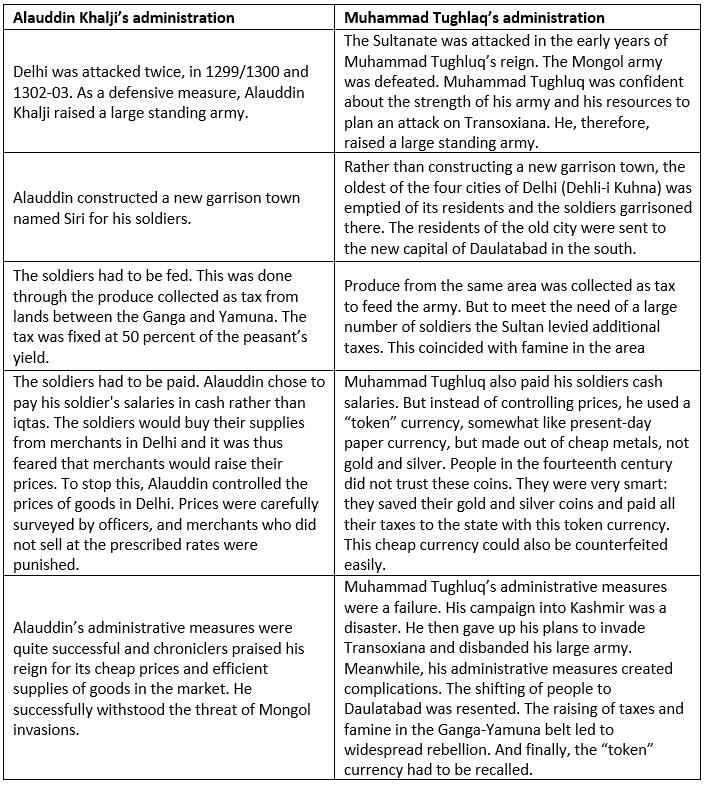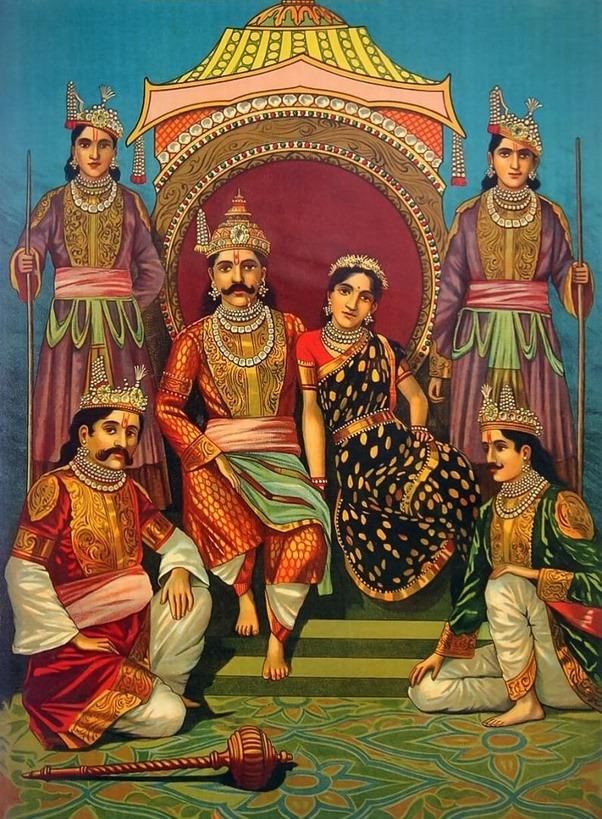BPSC (Bihar) Exam > BPSC (Bihar) Notes > NCERT Summary: The Delhi Sultans
NCERT Summary: The Delhi Sultans - BPSC (Bihar) PDF Download
| Table of contents |

|
| Delhi: The capital city |

|
| From Garrison Town to Empire |

|
| The Mongols |

|
| The Sultanate in The Fifteenth and Sixteenth Centuries |

|
| Mind map |

|
Delhi: The capital city
- Delhi became an important city only in the twelfth century. Delhi first became the capital of a kingdom under the Tomara Rajputs, who were defeated in the middle of the twelfth century by the Chauhans (also referred to as Chahamanas) of Ajmer. It was under the Tomaras and Chauhans that Delhi became an important commercial center.
 Tomar Rajput
Tomar Rajput - Many rich Jaina merchants lived in the city and constructed several temples. Coins minted here, called Dehliwal, had a wide circulation.
- The transformation of Delhi into a capital that controlled vast areas of the subcontinent started with the foundation of the Delhi Sultanate at the beginning of the thirteenth century. There were five dynasties that together made the Delhi Sultanate.
- The Delhi Sultans built many cities in the area such as Dehli-i Kuhna, Siri, and Jahanpanah that we now know as Delhi.
- Although inscriptions, coins, and architecture provide a lot of information, especially valuable are “histories”, Tarikh (singular) / Tawarikh (plural), written in Persian, the language of administration under the Delhi Sultans.
- The authors of Tawarikh were learned men: secretaries, administrators, poets, and courtiers, who both recounted events and advised rulers on governance, emphasizing the importance of the just rule. They lived in cities (mainly Delhi) and hardly ever in villages, often wrote their histories for Sultans in the hope of rich rewards, and advised rulers on the need to preserve an “ideal” social order based on birthright and gender distinctions. Their ideas were not shared by everybody.
- In 1236 Sultan Iltutmish’s daughter, Raziyya became Sultan. The chronicler of the age, Minhaj -I Siraj, recognized that she was more able and qualified than all her brothers. But he was not comfortable with having a queen as ruler. Nor were the nobles happy at her attempts to rule independently. She was removed from the throne in 1240.
From Garrison Town to Empire
➢ The Expansion of The Delhi Sultanate
- In the early thirteenth century, the control of the Delhi Sultans rarely went beyond heavily fortified towns occupied by garrisons. The Sultans seldom controlled the hinterland of the cities and were therefore dependent upon trade, tribute, or plunder for supplies.
- Controlling garrison towns in distant Bengal and Sind from Delhi was extremely difficult.
- Rebellion, war, even bad weather could snap fragile communication routes.
- The state was also challenged by Mongol invasions from Afghanistan and by governors who rebelled at any sign of the Sultan’s weakness. The Sultanate barely survived these challenges.
- The state’s expansion occurred during the reigns of Ghiyasuddin Balban, Alauddin Khalji, and Muhammad Tughluq.
- The first set of campaigns along the “internal frontier” of the Sultanate aimed at consolidating the hinterlands of the garrison towns.
(i) During these campaigns forests were cleared in the Ganga-Yamuna doab and hunter-gatherers and pastoralists expelled from their habitat.
(ii) These lands were given to peasants and agriculture was encouraged.
(iii) New fortresses and towns were established to protect trade routes and to promote regional trade. - The second expansion occurred along the “external frontier” of the Sultanate.
- Military expeditions into southern India started during the reign of Alauddin Khalji and culminated with Muhammad Tughluq.
- In their campaigns, Sultanate armies captured elephants, horses, and slaves and carried away precious metals.
- By the end of Muhammad Tughluq’s reign, 150 years after somewhat humble beginnings, the armies of the Delhi Sultanate had marched across a large part of the subcontinent.
➢ A Closer Look: Administration and Consolidation Under the Khaljis And Tughluqs
- The consolidation of a kingdom as vast as the Delhi Sultanate needed reliable governors and administrators.
- Rather than appointing aristocrats and landed chieftains as governors, the early Delhi Sultans, especially Iltutmish, favored their special slaves purchased for military service, called bandagan in Persian.
- The slaves were carefully trained to man some of the most important political offices in the kingdom. Since they were totally dependent upon their master, the Sultan could trust and rely upon them.
- The Khaljis and Tughluqs continued to use Bandagan and also raised people of humble birth, who were often their clients, to high political positions. They were appointed as generals and governors. However, this also introduced an element of political instability.
- Slaves and clients were loyal to their masters and patrons, but not to their heirs. New Sultans had their own servants. As a result the accession of a new monarch often saw conflict between the old and the new nobility.
- The patronage of these humble people by the Delhi Sultans also shocked many elites and the authors of Persian Tawarikh criticized the Delhi Sultans for appointing the “low and base-born” to high offices.
- Like the earlier Sultans, the Khalji and Tughluq monarchs appointed military commanders as governors of territories of varying sizes. These lands were called Iqta and their holder was called Iqtadar or muqti.
- The duty of the Muqtis was to lead military campaigns and maintain law and order in their Iqtas. In exchange for their military services, the Muqtis collected the revenues of their assignments as salary. They also paid their soldiers from these revenues.
- Control over Muqtis was most effective if their office was not inheritable and if they were assigned iqtas for a short period of time before being shifted. These harsh conditions of service were rigorously imposed during the reigns of Alauddin Khalji and Muhammad Tughluq.
- Accountants were appointed by the state to check the amount of revenue collected by the muqtis.
- Care was taken that the muqti collected only the taxes prescribed by the state and that he kept the required number of soldiers.
- As the Delhi Sultans brought the hinterland of the cities under their control, they forced the landed chieftains — the Samanta aristocrats — and rich landlords to accept their authority.
- Under Alauddin Khalji the state brought the assessment and collection of land revenue under its own control.
(i) The rights of the local chieftains to levy taxes were canceled and they were also forced to pay taxes.
(ii) Sultan’s administrators measured the land and kept careful accounts.
(iii) Some of the old chieftains and landlords served the Sultanate as revenue collectors and assessors.
(iv) There were three types of taxes –
(a) On cultivation called kharaj and amounting to about 50 percent of the peasant’s produce,
(b) On cattle and
(c) On houses. - It is important to remember that large parts of the subcontinent remained outside the control of the Delhi Sultans. It was difficult to control distant provinces like Bengal from Delhi and soon after annexing southern India, the entire region became independent.
- Even in the Gangetic plain, there were forested areas that Sultanate forces could not penetrate. Local chieftains established their rule in these regions. Sometimes rulers like Alauddin Khalji and Muhammad Tughluq could force their control in these areas but only for a short duration.
The Mongols
- The Mongols under Genghis Khan invaded Transoxiana in north-east Iran in 1219 and the Delhi Sultanate faced their onslaught soon after.
- Mongol attacks on the Delhi Sultanate increased during the reign of Alauddin Khalji and in the early years of Muhammad Tughluq’s rule. This forced the two rulers to mobilize a large standing army in Delhi which posed a huge administrative challenge.
- In the list of Muhammad Tughluq’s failures we sometimes forget that for the first time in the history of the Sultanate, a Delhi Sultan planned a campaign to capture Mongol territory. Unlike Alauddin’s defensive measures, Muhammad Tughluq’s measures were conceived as a part of a military offensive against the Mongols.
The Sultanate in The Fifteenth and Sixteenth Centuries
- The Sultanate in the fifteenth and sixteenth centuries. After the Tughluqs, the Sayyid and Lodi dynasties ruled from Delhi and Agra until 1526. By then, Jaunpur, Bengal, Malwa, Gujarat, Rajasthan, and entire south India had independent rulers who established flourishing states and prosperous capitals.
- This was also the period that saw the emergence of new ruling groups like the Afghans and the Rajputs. Some of the states established in this period were small but powerful and extremely well administered.
- Sher Shah Sur (1540-1545) started his career as the manager of a small territory for his uncle in Bihar and eventually challenged and defeated the Mughal emperor Humayun (1530-1540, 1555-1556). Sher Shah captured Delhi and established his own dynasty.
- Although the Suri dynasty ruled for only fifteen years (1540-1555), it introduced an administration that borrowed elements from Alauddin Khalji and made them more efficient.
- Sher Shah’s administration became the model followed by the great emperor Akbar (1556-1605) when he consolidated the Mughal Empire.

Mind map

The document NCERT Summary: The Delhi Sultans - BPSC (Bihar) is a part of BPSC (Bihar) category.
All you need of BPSC (Bihar) at this link: BPSC (Bihar)
FAQs on NCERT Summary: The Delhi Sultans - BPSC (Bihar)
| 1. What is the significance of Delhi as the capital city? |  |
Ans. Delhi is the capital city of India and holds immense historical and political importance. It has been the seat of power for various ruling dynasties and empires throughout history. Being the capital, it is the center of government, administration, and decision-making for the country.
| 2. How did Delhi transform from a Garrison Town to an Empire? |  |
Ans. Delhi initially started as a garrison town, which served as a military outpost. However, with the establishment of several dynasties and empires, Delhi gradually evolved into a powerful capital and an empire. The rulers expanded their territories through conquests, established administrative systems, and developed a strong economy, transforming Delhi into an empire.
| 3. Who were the Mongols and what was their role in Delhi's history? |  |
Ans. The Mongols were a nomadic Central Asian tribe known for their military prowess. They invaded Delhi in the 13th century under the leadership of Genghis Khan and his successors. The Mongols briefly ruled Delhi, establishing the Delhi Sultanate. Their invasion had a significant impact on the political and cultural landscape of Delhi.
| 4. What was the Sultanate in the fifteenth and sixteenth centuries? |  |
Ans. The Sultanate in the fifteenth and sixteenth centuries refers to the Delhi Sultanate, which was a Muslim kingdom that ruled over Delhi and parts of India during this period. The sultans were from various dynasties like the Tughlaqs, Lodis, and Sayyids. They exerted control over the region, implemented new policies, and contributed to the growth of art, architecture, and literature.
| 5. How does the NCERT summarize the Delhi Sultans? |  |
Ans. The NCERT summarizes the Delhi Sultans by providing a comprehensive account of their rule and the socio-political conditions during their reign. It covers various aspects such as the establishment of the Delhi Sultanate, the administration, economy, culture, and contributions of the sultans. The summary aims to provide a concise understanding of this historical period.
Related Searches



















